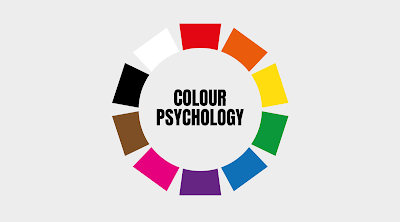One of the promises I made to myself recently for the month of July was to connect with new people. Not only did I make a new connection on LinkedIn last week, but we also got to collaborate on this blog post! Isn’t that amazing? For the longest time, I have been eager to meet a colour psychologist. As a business psychologist myself, one of the ways I help my clients’ businesses is to work on their brand; I guess you now understand why I’ve been eager to meet a colour psychologist. It gives me great joy to introduce Jasmine, a phenomenal colour psychologist, to you!
1. Hello Jasmine, you’re welcome to Graceful lifestyle blog. Kindly tell us about yourself.
Hi Grace, I am Tolulope Jasmine Idiakho, an architect, carpenter, colour psychologist and artist. I am an expert in colour and design psychology for businesses, Design, Branding and Consumer behaviour. I studied Architecture and Carpentry (Diploma) and have acquired several certifications in Colour Theory, Colour Psychology, Competitive Strategy, Design Thinking, Graphics Design, Innovation and Enterprise from institutions such, Federal University of Technology Akure, University of Lagos, Macromedia University of Applied Sciences Berlin, Loughborough University the United Kingdom, just to mention a few.
I am the founder and CEO of Arcteriorscape Limited, a design, architecture and furniture company in Lagos, Nigeria and have been featured in national newspapers, worked in various capacities both nationally and internationally with the UAE government and various brands like Samsung and Mitsubishi, and I’m a franchisee to international interior brands. My artistic, carpentry and architectural background are reflected in my impressive knowledge of architectural detail, furniture, colours, textile and art.
I believe that design elements, especially colours, have the ability to enrich and change people’s lives and that a good user-centric design must embody the specific user need.
2. Fantastic! So, what is colour psychology about?
Colour psychology is the study of how colour affects the perception or emotions of people/users, which subsequently affect their day to day behaviour and actions. Colour psychology as a science is basically the study of how colour affects human behaviour. Since colour is a constant in nature and every architectural structure, interior, space, object, product – everything has a colour, this will ultimately shape how people perceive, respond to, or behave around such spaces, objects, products etc.
Colour Psychology is unconscious and influences how we feel, behave and interact with others and our environment. Though it is a very complex subject, its proper application, when backed by science, is the only true way to create an emotional connection between potential clients and your products.
3. At this point, we are interested in knowing why you chose this career?
I always have been fascinated by the way the human mind worked (still am). I would always wonder why we did the things we did and if we had triggers that shaped our behaviour. Then one day, while in the university studying architecture, I stumbled upon the concept and science of colours psychology and knew it was something I would love to explore to create user-centric designs and ultimately help others have better experiences.
4. What role does the psychology of colour play in businesses and brand awareness?
When it comes to persuasion, emotion is the primary object. We must understand that “people buy on emotion and justify with logic”. Be you a business or brand, the fact is you are selling something (physical or not) that you hope people will buy into. Nothing, not even words or images, appeals to people’s emotions more than colour, either positively or negatively.
This is backed up by research, as research reveals that people subconsciously judge a person, environment, or product within 90 seconds of initial viewing. Between 62% and 90% of that assessment is based on colour alone.
5. So, can you say there’s a relationship between colours and our moods?
Absolutely! It is important to note that our response to colours can be subjective; what might make one person feel happy can make another person feel irritated depending on their past experiences or cultural differences.
Though we know that colours do not mean the same thing to people universally, we also know for a fact (thanks to science) that colours and emotions are closely linked. In general rule, warmer colours are observed to excite and stimulate, and cooler colours relax and sometimes bore us, but subjectivity will ultimately play a role.
6. Based on colour psychology, what advice do you have for people who want to lead a positive and happy life?
Well, there isn’t a one size fits all in colour psychology. Our experiences, culture, age, gender, will affect how we perceive and react to that colour; however, there are a few colours that may somewhat stimulate positive emotions in us. Light shades of yellow can help brighten your mood, and the same go for orange (these are usually called happy colours); pastel pink and blue can have a calming effect, but overall the best colours for you are the colours you love the most (the case is different if you are trying to tailor the colour to a certain audience. But in all you do with colour, you must remember to use it in moderation and make sure you use the correct ones or shades and that it is also appropriate for what you what to use it for, e.g. just because your favourite colour is black doesn’t mean it is appropriate for your baby’s room.
There you have it! If you’d like to add her to your connection on LinkedIn, click on the link below.
About The Author
Grace
is a wife and mom currently living in the UK. She has several years of experience in Digital Design, Digital Media and Business Psychology and enjoys sharing her thoughts on fashion, family, career and much more.




